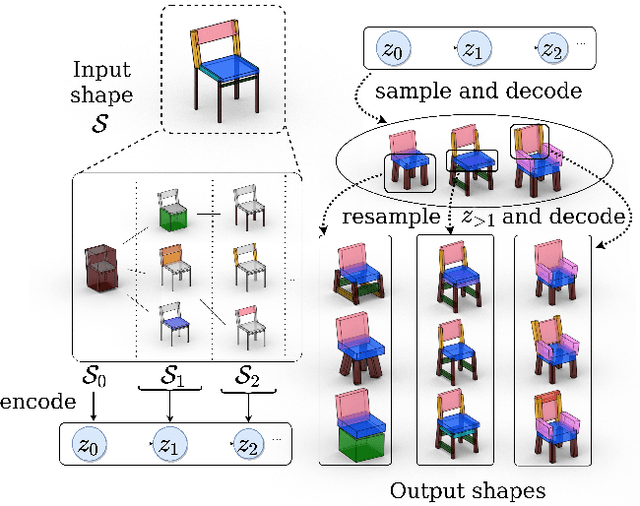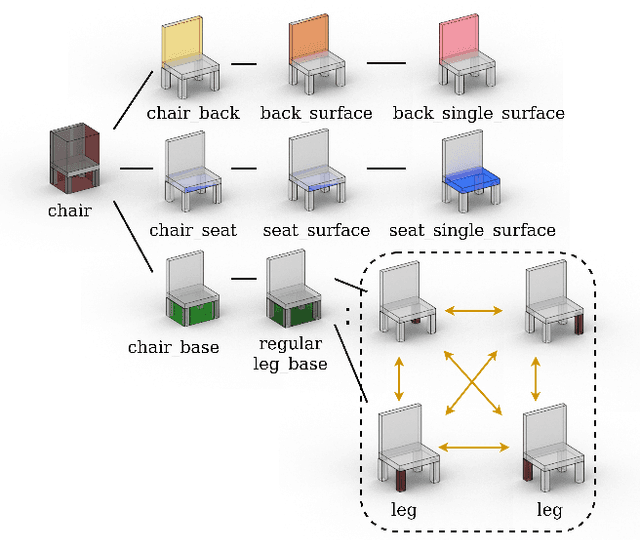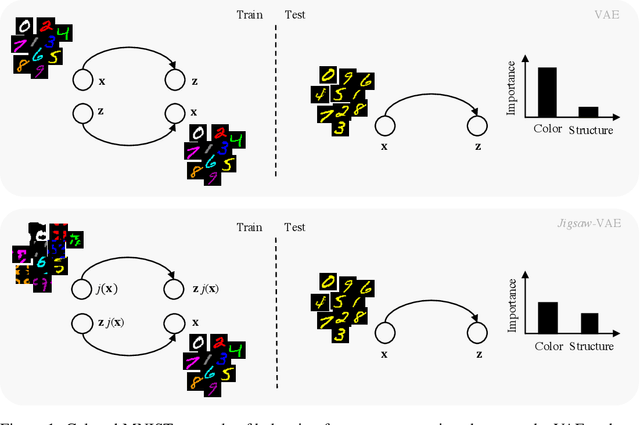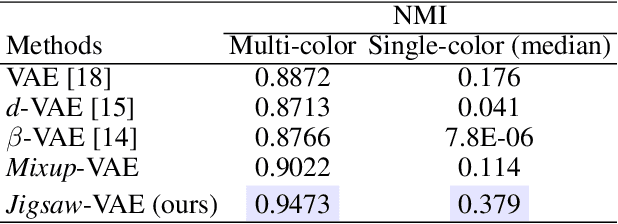Ara Danielyan
LSD-StructureNet: Modeling Levels of Structural Detail in 3D Part Hierarchies
Sep 07, 2021



Abstract:Generative models for 3D shapes represented by hierarchies of parts can generate realistic and diverse sets of outputs. However, existing models suffer from the key practical limitation of modelling shapes holistically and thus cannot perform conditional sampling, i.e. they are not able to generate variants on individual parts of generated shapes without modifying the rest of the shape. This is limiting for applications such as 3D CAD design that involve adjusting created shapes at multiple levels of detail. To address this, we introduce LSD-StructureNet, an augmentation to the StructureNet architecture that enables re-generation of parts situated at arbitrary positions in the hierarchies of its outputs. We achieve this by learning individual, probabilistic conditional decoders for each hierarchy depth. We evaluate LSD-StructureNet on the PartNet dataset, the largest dataset of 3D shapes represented by hierarchies of parts. Our results show that contrarily to existing methods, LSD-StructureNet can perform conditional sampling without impacting inference speed or the realism and diversity of its outputs.
Jigsaw-VAE: Towards Balancing Features in Variational Autoencoders
May 12, 2020



Abstract:The latent variables learned by VAEs have seen considerable interest as an unsupervised way of extracting features, which can then be used for downstream tasks. There is a growing interest in the question of whether features learned on one environment will generalize across different environments. We demonstrate here that VAE latent variables often focus on some factors of variation at the expense of others - in this case we refer to the features as ``imbalanced''. Feature imbalance leads to poor generalization when the latent variables are used in an environment where the presence of features changes. Similarly, latent variables trained with imbalanced features induce the VAE to generate less diverse (i.e. biased towards dominant features) samples. To address this, we propose a regularization scheme for VAEs, which we show substantially addresses the feature imbalance problem. We also introduce a simple metric to measure the balance of features in generated images.
 Add to Chrome
Add to Chrome Add to Firefox
Add to Firefox Add to Edge
Add to Edge